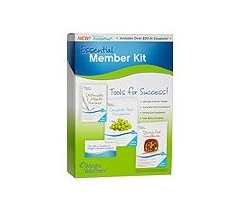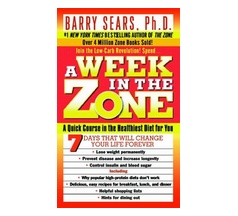Thursday, April 3, 2025
Weight Loss Programs: Compare
Now comparing
Price
Report Card Grade



Pros
Can customize diet plan to fit almost any person and lifestyle (vegetarian, vegan, gluten-free, etc.); teaching nutrition and portion-control from the beginning can make the plan easier to maintain in the long-term; allows for occasional splurges; in-person and online support available; offers pre-made snacks and meals so you can stick to the plan even if you are pressed for time; offers exercise incentives
Convenience of prepackaged, microwavable meals that control portions; lots of support for members with the Jenny consultants, a 24/7 support telephone line and multiple online tools; tailored diet plans; winner of Consumer Reports taste test for prepackaged diet meals
No foods are banned but some need to be eaten in moderation; if done correctly, you shouldn't feel hungry
Cons
Flexibility of plan may not work for the undisciplined; counting points can be tedious; have to maintain membership which can be costly
Most of the complaints are about how expensive the plan is; relies heavily on prepackaged meals, so its difficult to go out for dinner; Jenny consultants are not dieticians/nutritionists by profession; not appropriate for vegans or people with food allergies (gluten, peanuts, etc.)
Complicated and scientific; meticulous portioning can be time consuming; calorie intake is severely restricted; expensive to follow
Price
Food and membership costs vary. Currently, it is $30 to sign up, $19/month for online access and $43/month for unlimited meetings.
Food and membership costs vary. It can range between $0-$25 to sign up, $25-$38 in monthly membership fees and about $400 in monthly food costs.
Food prices vary. You can purchase A Week in the Zone for $10 (est.), and online membership is free. If you want to order the ZoneFast program to start, a 2-week supply costs $180. After that, a week's supply of Zone 1-2-3 foods, like buns and pasta, costs about $75.
Diet Type
Low-Calorie, Balanced
Low-Calorie, Low-Fat, Balanced
Balanced
Diet Goals
Weight Loss and General Health
Weight Loss
Weight Loss
Theory
The idea behind the Weight Watchers Program is that you'll eat less and won't feel as hungry if you make healthier food choices that fill you up for longer.
The idea behind the Jenny Craig program is that you can lose weight and maintain that weight loss when you combine balanced nutrition and portion control with an improved attitude toward food and exercise.
The Zone Diet promotes the idea of food not as "a source of calories but as a control system for hormones." By eating the right food in the correct proportions, the body will reach a metabolic state where it is operating at "peak efficiency". You not only lose weight, but you feel great, mentally and physically.
How It Works
Weight Watchers uses a PointsPlus system to help dieters measure daily food intake and to encourage them to make healthier choices. The PointsPlus system assigns a point value to different foods, which is calculated by its protein, carbohydrate, fat, fiber and calorie content, as well as by how difficult it is for the body to work it off. Each dieter is given a unique PointsPlus target according to their gender, height, weight and weight loss goals. You can basically eat whatever you want on the Weight Watchers program, as long as you stay within your daily PointsPlus target, but you are encouraged to eat more "Power Foods," which are considered the healthiest and most filling. "Power Foods" include whole grains, lean meats, low-fat dairy and (unlimited quantities of) fresh fruit and non-starchy veggies.
The Jenny Craig program assigns each dieter a personal Jenny consultant who will customize their weight loss plan and meet with them during weekly one-on-one sessions to help guide them through the program's 3 stages - food, body and mind. To educate you on nutrition and portion control, the program initially provides frozen or shelf-stable prepackaged meals that are high in fiber and low in fat/cholesterol. You will supplement these meals with 2-3 servings of fresh fruits, vegetables, or non-fat dairy products bought at a local grocery store. Halfway from your goal weight, you will slowly transition to cooking your own meals (using Jenny recipes) until you have reached your goal weight and are only cooking your own food. Meanwhile, your Jenny consultant will help devise a workout program based on your current activity level with the ultimate goal eventually being 60 minutes of advanced physical activity a day (Pilates, running or weight training). Your Jenny consultant will also help you better understand how your existing relationship with food, life experiences and social environment have impacted your health and weight, and how you can build the necessary skills to change your previous mind-set and maintain the good habits that you have acquired during the program.
Created by biochemist Dr. Barry Sears, the Zone Diet controls dieters' food intake using a "food block" system, which assigns values to different foods. For example, 1 food block could equal 12 spears of asparagus or 1 ounce of chicken or 1/3 teaspoon of olive oil. Most women are able to consume 11 food blocks a day, while most men will be allowed 14. Eating in the right proportions is also essential on the Zone Diet. Each meal should be 40% carbs, 30% protein (low-fat), and 30% of healthy fat. When putting together your plate, 1/3 of it should be filled with a low-fat protein (3 oz for women or 4 oz for men), and the other 2/3 of it should be filled with low-GI carbs (ex. vegetables, lentils, beans, whole grains or fruit). You can then use a "dash" of heart-healthy monounsaturated fat (ex. olive oil, canola oil, macadamia nuts, and avocados) on top. Finally, the Zone requires keeping a food journal where you track what you ate and how you felt after 4 hours. If you aren't hungry and your mind is clear, your body is in The Zone.
Calorie Intake
Since Weight Watchers uses the PointsPlus system, there isn't a focus on calories, but, no matter what, you will be getting at least 1200 calories a day.
Calorie intake can range from 1,200 - 2,300 calories per day depending on the plan you come up with your Jenny consultant, which will be based on your age, height, current weight, gender, your activity level, etc.
Women will consume an average of 1100 calories a day, and men will consume an average of 1400 calories a day.
Support
You can sign up to attend group meetings at your local Weight Watchers branch or you can just sign up for the online program. To keep track of the points you are consuming, Weight Watchers also offers a pocket guide, pocket calculator, an online database of 40,000 foods and a mobile app with the database for additional convenience. Weight Watchers also offers recipes that show the PointsPlus value or, if you are making your own dish, you can use the company's online tools to calculate points ingredient by ingredient.
You can participate in the program by attending weekly sessions at a local Jenny Craig center or you can also participate from the comfort of your own home. Either way, you will have access to a Jenny consultant for one-on-one weekly meetings and to Jenny's 24/7 telephone line to get information or support whenever you need it. The program also offers online support, including peer-support discussion groups and progress tracking tools.
The Zone Diet sells how-to books with different recipes to try and also offers free access to their online community, which includes message boards, recipes, meal planners, body fat calculators, etc.
Exercise
Physical activity is encouraged, and Weight Watchers assigns different activities a PointsPlus value in order to incentivize dieters. Whether it is an hour of running, dancing or doing laundry, you'll receive extra food points when you exercise to allow for the occasional splurge.
30 - 60 minutes of physical activity is encouraged, and your Jenny consultant will help you determine your fitness goals/routine. Usually, Jenny consultants will try to incorporate exercise into your daily life (ex. walking, taking the stairs, doing laundry, etc.), but they may suggest that already active dieters add more rigorous exercise (ex. Pilates, weight training, etc.).
While exercise is encouraged on the Zone Diet, it is not required.
Book
Examples of available books include: Weight Watchers All-Time Favorites: Over 200 Best-Ever Recipes from the Weight Watchers Test Kitchens, Weight Watchers In 20 Minutes, Weight Watchers New Complete Cookbook.
Examples of available books include: Jenny Craig No Diet Required, The Jenny Craig Cookbook: Cutting Through the Fat, Simple Pleasures: Recipes to Nourish Body and Soul.
Examples of available books include: Enter The Zone: A Dietary Road Map, Zone Meals in Seconds: 150 Fast and Delicious Recipes for Breakfast, Lunch, and Dinner, A Week in the Zone: A Quick Course in the Healthiest Diet for You







